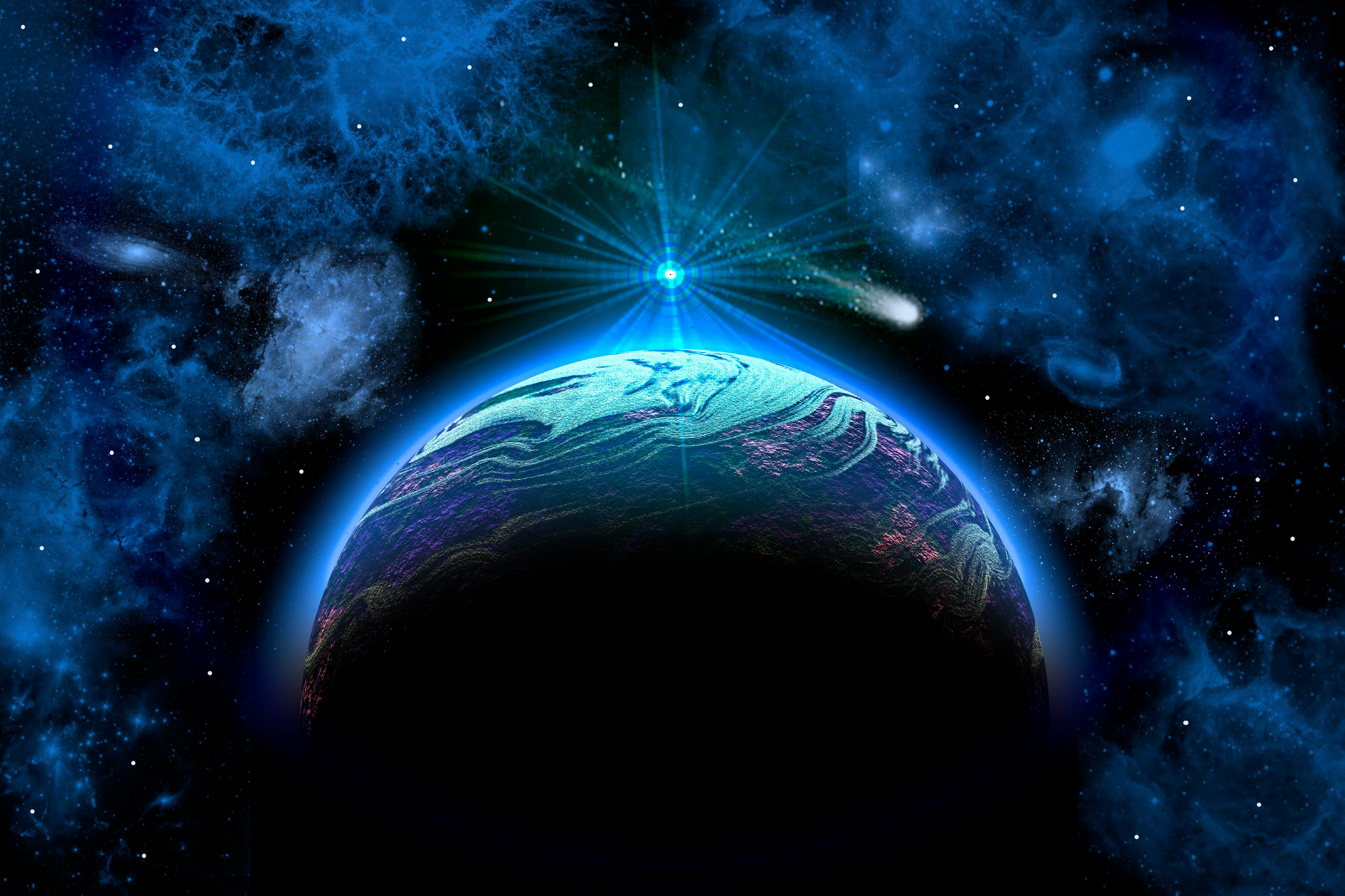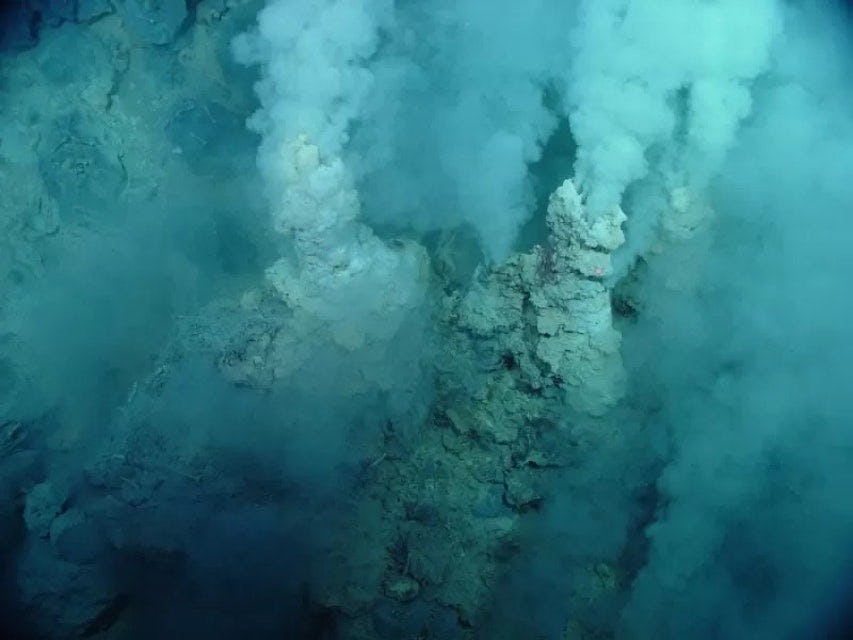
Hydrogen and helium atmospheres could keep exoplanets warm enough to be habitable for billions of years, even at huge distances from their stars.
Astrobiologists normally think of the habitable zone as the comfortable region of space relatively close to a star (but not too close). Life needs water — liquid, not ice — and the distant reaches of a star system should be too cold for liquid water to exist. That idea guides where astronomers search for exoplanets and where the Webb telescope and others will search for chemical evidence of life in alien atmospheres. But a new study suggests we should give more distant orbits a second look.
In a study published Monday in the journal Nature Astronomy, University of Zurich planetary scientist Marit Mol Lous and her colleagues say that an unusual type of exoplanet could keep itself warm — and potentially habitable — for several billion years at roughly the equivalent of Saturn’s distance from the Sun.
What’s New — Mol Lous and her colleagues recently built computer models of super-Earths orbiting Sun-like stars, all with atmospheres made of a mix of hydrogen and helium.
“The idea that planets with a primordial, hydrogen- and helium-dominated atmosphere could host liquid water has been around for some time. We wanted to investigate this and include the time component,” Mol Lous tells Inverse. “If there can be liquid water on a planet, but it would only be possible for a short time, that does not make a strong case for habitability.”
It turns out that a thick blanket of hydrogen and helium can keep a planet’s surface warm enough to hold liquid water for billions of years, even at up to 10 times Earth’s distance from the Sun (10 astronomical units, or AU). That could be enough time for life to evolve, based on the one example we have so far: Earth.

Dense, hydrogen-rich atmospheres are really good at absorbing infrared energy (also known as heat). When hydrogen molecules are crowded into a dense atmosphere, they’re more likely to collide; those collisions disturb the molecules in a way that makes them more likely to absorb infrared energy. The result is a bit like the greenhouse effect, which gases like carbon dioxide and methane create here on Earth — except CO2 and methane just trap heat beneath them, like a blanket. Hydrogen actually absorbs heat, so it’s more like a planet-sized heated blanket.
And according to Mol Lous and her colleagues’ simulations, that’s a surprisingly stable planetary thermostat.
A planet up to 10 times more massive than Earth, orbiting a Sun-like star at two to 10 AU, could stay warm enough to have a liquid ocean on its surface for five to eight billion years — but only if its atmosphere had enough mass. Mol Lous and her colleagues found that an atmosphere with about 0.1 percent to 0.001 percent as much mass as planet Earth was ideal. And that’s why the planet has to be least two AU from its star: any closer than that, and solar wind strips away the atmosphere.
Here’s The Background — Earth’s atmosphere has changed dramatically in the last 4.5 billion years thanks to collisions, volcanoes, and life. However, exoplanets like the ones in Mol Lous and her colleagues’ simulations still have atmospheres in pristine condition left over from the planet’s formation. Some planetary scientists have dubbed these hypothetical planets Hycean worlds: super-Earths with rocky cores, watery oceans, and their original atmospheres of hydrogen and helium.
Life on a Hycean world, if it exists, “would life under considerably different conditions than most life on Earth,” wrote Mol Lous and her colleagues in their recent paper. The atmospheric pressure on the surface of a Hycean world would be comparable to the deepest parts of the ocean floor here on Earth. But there’s life in Earth’s ocean depths, so life could — in theory — find a way to thrive under the weight of a thick alien atmosphere, too.
“There is no theoretical pressure limit on life,” wrote Mol Lous and her colleagues.

Why It Matters — The recent study, along with previous simulations of Hycean worlds, suggests that we need to be open-minded about where we search for alien life.
Traditionally, a star system’s “habitable zone” is defined as the distance from a star at which liquid water can exist on a planet’s surface. In our Solar System, the habitable zone extends from just inside Earth’s orbit to just beyond Mars’ orbit. We’ve also found liquid water on the moons of Jupiter and Saturn, though, and that’s forced some astrobiologists to rethink their ideas about habitable zones.
And the old model of the habitable zone doesn’t include even stranger places, like Hycean worlds.
“The conclusions of the study add to the emerging picture that notions of planetary habitability need to be expanded beyond the classical definition limited to terrestrial-like planets,” Cambridge University planetary scientist Nikku Madhusudhan, who coined the term “Hycean world,” tells Inverse.
What’s Next — Of course, studies like this are mostly informed speculation until astronomers actually find some super-Earths orbiting at the distances covered in this study. Until then, astronomers don’t know how common Hycean worlds actually are.
“Hycean worlds are expected to be both abundant in the solar neighborhood and conducive for habitability and biosignatures searches,” says Madhusudhan. “In our original study introducing the Hycean class we had identified 11 exoplanets orbiting nearby stars that could qualify as candidate Hycean worlds.” Of course, astronomers won't know for sure until they can directly image those planets' atmospheres.
So far, most of the super-Earths astronomers have discovered orbit much closer to their host stars. Models predict that more distant super-Earths should abound, but if you’re an astronomer watching for the shadow of a small planet passing across a star, a close-in planet casts a bigger shadow than a far-off one.
But in closer orbits, stellar winds tend to strip away planets’ atmospheres. “We need to observe super-Earths that are further away [from their stars],” said Mol Lous.
The James Webb Space Telescope may improve the odds. And when the Nancy Grace Roman Space Telescope launches in 2027, astronomers will be able to search for exoplanets using not only the transit method, but gravitational microlensing as well.
Webb will also be able to directly image exoplanets’ atmospheres, revealing their chemical makeup. That could not only identify a Hycean world, but spot telltale evidence of a liquid ocean beneath the heated blanket of hydrogen and helium.
“It has also been shown that similar JWST data would be able to infer key biosignature molecules if present in the atmosphere, such as methyl chloride and dimethyl sulphide,” says Madhusudhan.
Meanwhile, Mol Lous and her colleagues are using computer models to investigate whether Hycean worlds could have magnetic fields, which would protect life on the planet’s surface against potentially deadly radiation from its host star.







